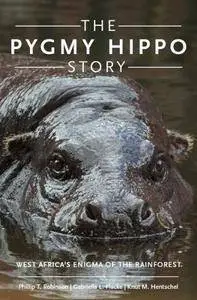The Pygmy Hippo Story: West Africa's Enigma of the Rainforest by Phillip T. Robinson, Gabriella L. Flacke, Knut M. Hentschel
2017 | ISBN: 0190611855 | English | 440 pages | PDF | 48 MB
2017 | ISBN: 0190611855 | English | 440 pages | PDF | 48 MB
Though the pygmy hippopotamus has been designated as a flagship species of West African forests (meaning that by raising conservation efforts for a single species, an entire ecological region could benefit), very little research has been published on the animal. They are solitary, nocturnal, and highly evasive, and until recent developments in "camera trap" technology, they were considered the least-photographed large mammal species in the world. The information currently available on this endangered species is scattered, limited, redundant, and often inaccurate, and no major volume exists as a resource for those interested in the conservation effort for the species, until now.
Phillip Robinson and his coauthors provide a treatment of the natural history, biology, and ecology of the pygmy hippo, along with a discussion of the rare animal's taxonomic niche and a summary of the research initiatives involving it up to this point. The authors show the ways in which the pygmy hippo has come into contact with people in West African countries, both in terms of ecological and cultural impact. This creature has been the subject of local folktales, and is treated as almost mythic in some regions. Information on issues related to captivity, breeding, and zoos is provided. The book is heavily illustrated with original photographs and anatomic drawings. The project should be of use to conservation biologists, zoologists and natural history readers, and will be the definitive single-volume account of an animal that the scientific community has designated to be ecologically significant to West Africa.



